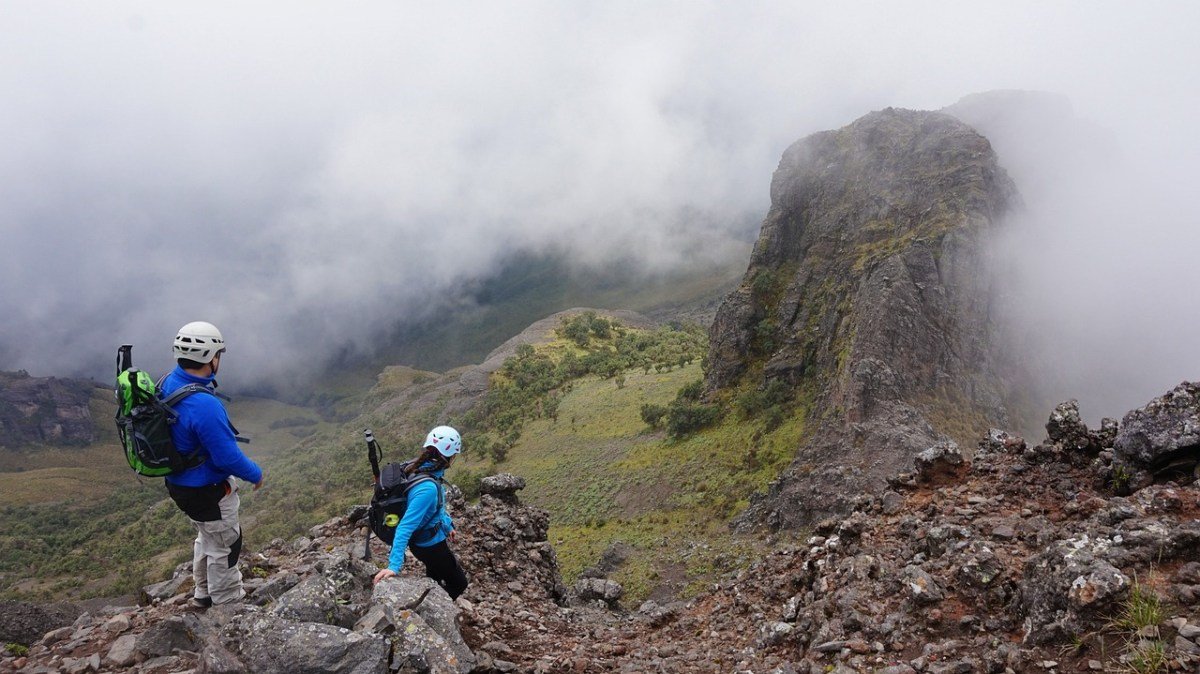Ask Outdoors: How Should I Train for High-Altitude Hiking?
An area is considered high altitude if it rises at least 1,500 meters (4,900 feet) above sea level. From there, according to the National Library of Medicine, one can categorize altitude into the following:
- High altitude = 1,500 to 3,500 meters above sea level (4,900-11,500 feet)
- Very high altitude = 3,500 to 5,500 meters above sea level (11,500 to 18,000 feet)
- Extreme altitude = 5,500+ meters above sea level (18,000+ feet)
When you start planning your adventures in these higher atmospheric spaces, there are some unique challenges you’ll need to keep in mind.
Challenges of High-Altitude Hiking
Altitude sickness: As you climb to higher elevations with less oxygen, acute mountain sickness can occur, which includes symptoms like headaches, nausea, fatigue, dizziness, and trouble sleeping. Taking time to acclimate and ascend slowly can help.
Cold temperatures: Even during summer, temperatures can drop significantly at higher altitudes, which can lead to hypothermia if you’re not properly prepared with warm layers and gear. Also a good note: the sun’s UV rays are stronger at altitude.
Dehydration: The air is very dry at high altitude, which causes the body to lose more moisture. Staying hydrated by drinking lots of water is critical.
Reduced appetite: Appetite tends to decrease at altitude, making it hard to consume enough calories. High caloric foods eaten regularly are important to maintain energy levels.
Sleep disturbances: It’s common to experience interrupted sleep patterns and insomnia while acclimatizing to high elevations. Allowing extra time for proper rest is key.
Physical exertion: Any physical activity like hiking requires more effort at altitude due to less oxygen. Pacing yourself and having realistic expectations of your physical abilities is important.
Isolation: Trekking at high altitude means you may be far from roads, towns, and help, if you need it. Self-sufficiency skills and proper planning are a must.

How To Train for High-Altitude Hiking
Here are some tips for training for high-altitude hiking:
- Listen to your body and rest/recover as needed. Training consistency over several months is key.
- Build up your aerobic endurance with cardio workouts (i.e., running, cycling, or swimming). The more fit you are, the easier it will be to acclimatize.
- Build your core muscles with weight training; focus on legs, glutes, hips, and back, which are all activated when you hike.
- Hike local trails that have elevation gain and loss, and climb stairs with a weighted pack. Get used to exerting energy going uphill and bracing knees/legs going downhill.
- As much as possible, train outdoors and on varied terrain. Hike on dirt, rocks, and grass. There are no treadmills in the wild and no condition control.
- Try interval training by going hard for short bursts then recovering. This mimics going up and down passes.
- As you get closer to the hike, do some hikes at higher elevations, if you can access them. This helps acclimatization.
- Stay well hydrated during all training. Drink water frequently before, during, and after workouts.
Being well-prepared both physically and mentally helps overcome the unique risks of climbing at elevation.
And remember, it’s a very good idea to check in with your doctor before attempting any intense physical adventures.
Source: https://outdoors.com/ask-outdoors-how-should-i-train-for-high-altitude-hiking/





